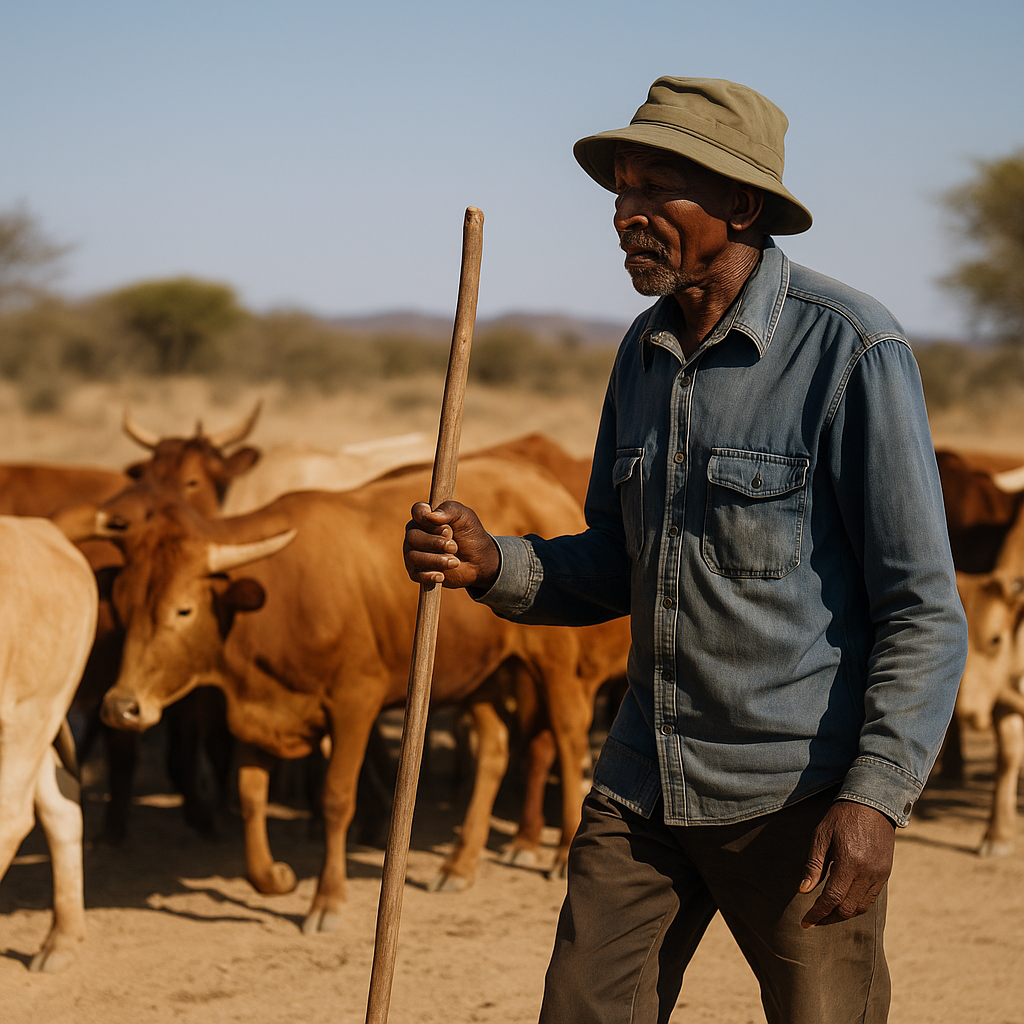Agricultural drought threatens South Africa’s food security as farmers struggle to adapt
Commercial livestock enterprises supply a large share of South Africa’s meat, hide and export earnings. Their failure cascades into rural job losses, higher consumer prices and mounting import dependencies. At the same time, Sustainable Development Goal 2 (SDG2) commits the country to ending hunger, while SDG 13 demands proactive climate adaptation. The study makes clear that achieving either target will require moving beyond crisis‑era bail‑outs toward evidence‑based resilience building.

- Country:
- South Africa
South Africa’s commercial livestock industry is under intensifying pressure as severe, recurring droughts erode grazing lands and strain farm finances. A recent field investigation warns that most producers remain ill‑equipped to cope with these shocks, underscoring the urgent need for multidimensional policy support.
The study "Strengthening Agricultural Drought Resilience of Commercial Livestock Farmers in South Africa: An Assessment of Factors Influencing Decisions" published in Climate presents the first empirically validated drought‑resilience index built for the country’s modern livestock sector. Based on 123 survey responses from Northern Cape producers collected between August 2023 and October 2024, the work quantifies each farm’s capacity to absorb, adapt to and transform under drought stress while pinpointing the social, institutional and environmental levers that most affect outcomes.
How vulnerable are commercial farmers to agricultural drought?
The research team developed an Agricultural Drought Resilience Index (ADRI) by combining four production and finance indicators: standard versus drought‑year livestock output, months of cash‑flow stability and two measures of herd sustainability. Scores were then coded into a binary outcome, resilient or not resilient, and regressed against 22 explanatory variables covering socio‑economic status, resource assets, institutional support, farm scale and adaptive strategies.
The findings are sobering. Fully 67 percent of respondents fall below the resilience threshold, meaning two out of three commercial operations lack the buffers, whether financial, environmental or social, needed to continue normal activities through a single protracted drought. Only a third display the capacity to navigate extended water shortages without major stock losses or forced asset sales. This vulnerability is especially alarming given long‑range climate projections that foresee more frequent and severe dry spells across South Africa’s arid interior.
Which factors distinguish resilient farms from struggling ones?
The probit model reveals that resilience is not a matter of luck but the product of tangible, leverageable assets:
- Reliable natural water sources deliver the strongest positive effect. Farmers with access to perennial boreholes, dams or well‑managed communal water points are significantly more likely to maintain herd productivity during a drought.
- Social capital, expressed through active farmer networks and family support, emerges as a critical buffer. Producers embedded in strong community circles gain better access to feed sharing, labour help and informal financial assistance.
- Educational attainment matters. Farm managers with at least a tertiary qualification demonstrate superior planning and quicker uptake of adaptive technologies, ranging from fodder budgeting software to drought‑resistant forage crops.
- Economies of scale offer a protective shield: larger herds and diversified revenue streams dilute per‑animal losses and free resources for contingency planning.
On the other hand, farms with limited water infrastructure, smaller livestock numbers and restricted market access are markedly more exposed. The findings confirm that resilience is inherently multidimensional, hinging on a blend of physical assets, institutional linkages and adaptive behaviour.
What policy shifts are required to build long‑term resilience?
The authors argue that South Africa’s current drought‑relief framework, largely reactive grants and feed subsidies, no longer matches the scale or frequency of the threat. They outline four policy pivots:
- Water‑security investments: Expand rural borehole programs, rehabilitate decaying earth dams and incentivise on‑farm water‑harvesting systems. Improving water reliability addresses the single most powerful resilience driver identified in the study.
- Extension and education accelerators: Fund targeted training on climate‑smart grazing, pasture monitoring and financial risk management. Higher farmer education correlates strongly with resilience, signalling rapid returns on training budgets.
- Livelihood diversification incentives: Support feedlot partnerships, agri‑tourism ventures and on‑farm processing that add non‑weather‑dependent income streams. Diversification stabilises cash flow and unlocks capital for drought preparation.
- Community‑based support structures: Formalise grazing‑cooperative frameworks and peer‑to‑peer knowledge hubs to strengthen the social networks already proven to protect vulnerable producers.
By combining infrastructure upgrades with skills development and social‑capital reinforcement, policymakers can transform resilience from an individual aspiration into a systemic attribute of the livestock economy.
Why the findings matter for food security and climate goals
Commercial livestock enterprises supply a large share of South Africa’s meat, hide and export earnings. Their failure cascades into rural job losses, higher consumer prices and mounting import dependencies. At the same time, Sustainable Development Goal 2 (SDG2) commits the country to ending hunger, while SDG 13 demands proactive climate adaptation. The study makes clear that achieving either target will require moving beyond crisis‑era bail‑outs toward evidence‑based resilience building.
Notably, the ADRI provides a diagnostic template other provinces can adapt, allowing rapid benchmarking and real‑time progress tracking. It also offers lenders and insurers a structured tool for risk assessment, potentially unlocking preferential finance for farms that demonstrate robust drought‑management plans.
- READ MORE ON:
- drought resilience in South Africa
- livestock farming and climate change
- commercial livestock farmers South Africa
- South Africa food security drought
- how drought affects commercial livestock farms in South Africa
- factors influencing drought resilience in South African agriculture
- Agricultural Drought Resilience Index (ADRI)
- building drought-resistant livestock economies
- FIRST PUBLISHED IN:
- Devdiscourse










